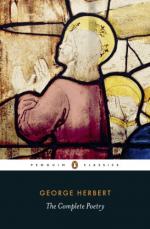|
This section contains 242 words (approx. 1 page at 400 words per page) |

|
The Altar Summary & Study Guide Description
The Altar Summary & Study Guide includes comprehensive information and analysis to help you understand the book. This study guide contains the following sections:
This detailed literature summary also contains Quotes and a Free Quiz on The Altar by George Herbert.
The version of this poem used to create this guide appears in: Herbert, George. The Complete Works, Ed. Ann Pasternak Slater. Everyman's Library, 1995.
Note that parenthetical citations with the guide refer to the line number from which the quotation is taken.
George Herbert was an important literary and religious figure in early modern England. He is closely associated with the metaphysical movement most famously represented by fellow poet John Donne, but his more well-known works are largely devotional lyrics written to and about God. Herbert came from a wealthy family and received an elite education at Cambridge, eventually serving in parliament under King James I. After James's death in 1625, Herbert became a clergyman in the Church of England. He served as the rector of Fugglestone St. Peter near Salisbury until his death from tuberculosis in 1633.
Just before his death, Herbert published his poetry collection The Temple. The collection is divided into three parts: "The Church Porch," "The Church," and "The Church Militant." "The Altar" is the introductory poem to "The Church," mirroring the effect of entering a church and immediately seeing the altar at the front. "The Altar" is a shape poem, meaning that the lines on the page form an image closely related to the poem's subject matter – in this case, a table or altar. Within the space of 16 shaped lines, Herbert's speaker argues that the human heart is the altar that Christians must offer to God.
Read more from the Study Guide
|
This section contains 242 words (approx. 1 page at 400 words per page) |

|



